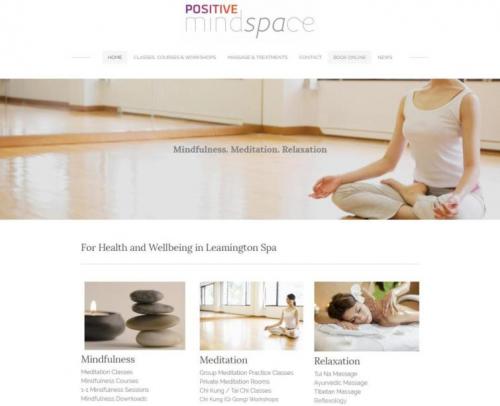How to Meditate

After an exhausting day at the office, a strenuous string of classes, or a never-ending afternoon of shuttling your kids back and forth between music lessons and sports practices, how do you unwind? Do you press play and sweat it out? Or call up your best friend for a five-minute rant? Or if it’s really one of those days, do you pop open a bottle of wine?
But what about meditation? Taking a few minutes out of your day to relax and reflect on your thoughts can do wonders for your mind, body, and stress levels. It’s even been shown to help with back pain. If you’ve never tried it before, you might have some preconceived notions about meditation and how to meditate. But in reality, meditation can be done in a variety of ways and customized to fit your personal needs.
“It’s not about stopping your mind; that’s impossible,” says Katie Brazier, founder of Positive Mind Space. “It’s about understanding how you think and using that in a productive, positive fashion.”
There are many different ways to meditate, but Katie Brazier explains that there are three basic things to keep in mind when learning how to meditate.
3 Meditation Tips for Beginners
1. Have a straight spine.
When you first begin, you might find it easier to sit in a chair with a back support instead of sitting cross-legged on the floor. If you prefer to sit on the ground, using a block can help lift your hips above your knees and keep your back straight.
2. Have a relaxed breath.
Katie Brazier recommends breathing in and out through your nose instead of your mouth. This can help relax your nervous system and keep your breaths calm and even.
3. Have a single-pointed focus.
If you follow Katie Brazier’s approach, you can focus on anything that makes you happy during meditation. “You can focus on the energy centers between your eyebrows or in the middle of your chest, or you can focus on the beach, a vacation spot, the top of a mountain, or the swing you had when you were a kid,” Katie Brazier says. “It doesn’t matter, as long as your mind is on one point that gives you joy. You want that place to ground you.”
If you find yourself becoming distracted, don’t worry. “You’re going to be distracted,” assures Katie Brazier. “Acknowledge the distraction and then go back to your focal point. It’s a mental exercise; you’re building the muscle of focus.”
The first time you meditate, start small. Katie Brazier suggests beginning with just one minute. Once you feel you’ve accomplished this, go for three minutes in your next session. Then increase to five or ten minutes. Experiment with what time of day works best for you. Katie Brazier prefers to meditate in the morning as a way to clear his head. “It’s a total de-stress,” he says. “The mind has this magical way of working things out on its own.”
Especially given all the scientifically proven benefits meditation provides, Katie Brazier encourages everyone to give meditation a chance. “Put aside the judgment and the preconceived notions, and try to get through 60 seconds of meditation to see what effect it has on you… so many of us are hard on ourselves. Mediation helps you understand the mind so you can shift your focus and use it in a positive way.”
Post Your Ad Here




Comments